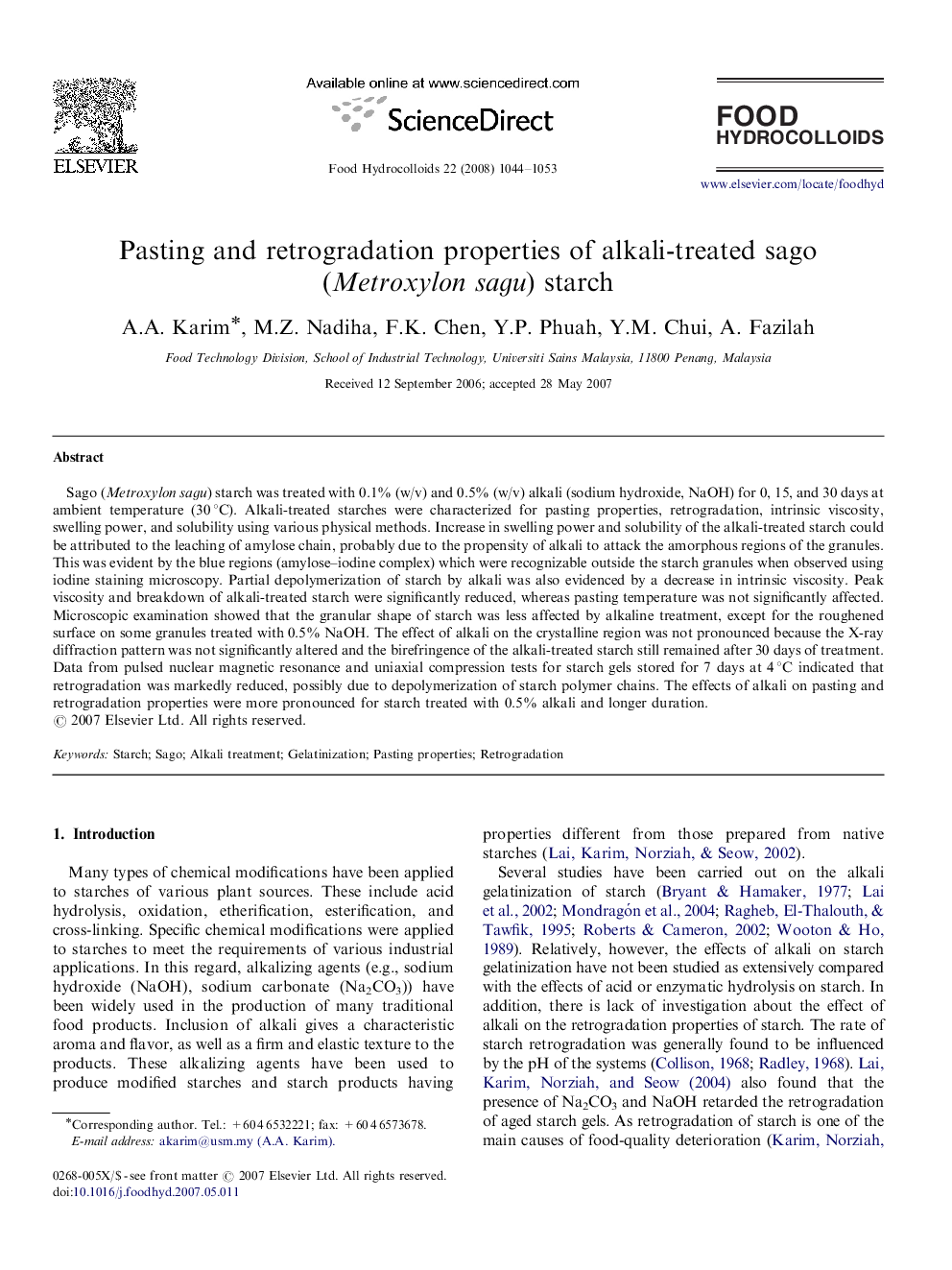| Article ID | Journal | Published Year | Pages | File Type |
|---|---|---|---|---|
| 605269 | Food Hydrocolloids | 2008 | 10 Pages |
Sago (Metroxylon sagu) starch was treated with 0.1% (w/v) and 0.5% (w/v) alkali (sodium hydroxide, NaOH) for 0, 15, and 30 days at ambient temperature (30 °C). Alkali-treated starches were characterized for pasting properties, retrogradation, intrinsic viscosity, swelling power, and solubility using various physical methods. Increase in swelling power and solubility of the alkali-treated starch could be attributed to the leaching of amylose chain, probably due to the propensity of alkali to attack the amorphous regions of the granules. This was evident by the blue regions (amylose–iodine complex) which were recognizable outside the starch granules when observed using iodine staining microscopy. Partial depolymerization of starch by alkali was also evidenced by a decrease in intrinsic viscosity. Peak viscosity and breakdown of alkali-treated starch were significantly reduced, whereas pasting temperature was not significantly affected. Microscopic examination showed that the granular shape of starch was less affected by alkaline treatment, except for the roughened surface on some granules treated with 0.5% NaOH. The effect of alkali on the crystalline region was not pronounced because the X-ray diffraction pattern was not significantly altered and the birefringence of the alkali-treated starch still remained after 30 days of treatment. Data from pulsed nuclear magnetic resonance and uniaxial compression tests for starch gels stored for 7 days at 4 °C indicated that retrogradation was markedly reduced, possibly due to depolymerization of starch polymer chains. The effects of alkali on pasting and retrogradation properties were more pronounced for starch treated with 0.5% alkali and longer duration.
